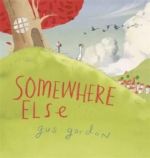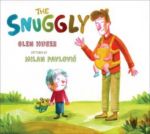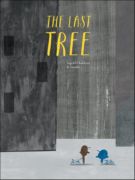
Biography of Václav Havel who served as the last president of Czechoslovakia from 1989 until its dissolution of Czechoslovakia in 1992 and as the first President of the Czech Republic from 1993 to 2003.
Catalog sorted by age group

Biography of Václav Havel who served as the last president of Czechoslovakia from 1989 until its dissolution of Czechoslovakia in 1992 and as the first President of the Czech Republic from 1993 to 2003.

A young emperor, whose advisors have taken advantage of him, enlists the help of honest tailors to reveal their misdeeds in this retelling of the classic fairy tale. Includes historical notes and instructions for making a robe.

While other birds are seeing the world, George the duck is content to stay at home–or so it seems until he confesses the truth to Pascal, a visiting bear.

A very busy little girl learns an important lesson from her very lazy cat, Boomer.

It’s been four years since Maya, Simon, and Penny Nelson left the lost island of Tamarind. For Maya, the island is a nearly forgotten part of her childhood; for Penny, it’s a secret place she can’t remember, but longs to see; and for Simon, it’s an adventure waiting to happen. An evil group called the Red Coral Project is lurking around the Nelson’s home in Bermuda, and the children discover that the project has moved into Tamarind, and are desiccating it to ruin. Only the Nelson’s can save the island. In Tamarind, there is the mystery of the magical mineral ophalla that Red Coral is greedily mining, their old pirate ship, the Pamela Jane, and the secret of their friend Helix’s parentage. This time, it is up to Simon to put the clues together, and save his sisters from the island and the nefarious Red Coral Project—and defeat Red Coral before the magnificent island is put to ruin. Nadia Aguiar’s sequel to The Lost Island of Tamarind, crafts a vivid story reminiscent of such classics as Peter Pan, full of adventure, magic, and haunting beauty.

An alphabet book with fantastic and detailed pictures, bearing such labels as “Lazy lions lounging in the local library.

Award-winning author and illustrator Duncan Tonatiuh tells the story of Amalia Hernandez, dancer and founder of El Ballet Folklorico de Mexico. Published in time for the 100th anniversary of Hernandez’s birth, Danza! is the first picture book about the famous dancer and choreographer. Danza! is a celebration of Hernandez’s life and of the rich history of dance in Mexico. As a child, Amalia always thought she would grow up to be a teacher, until she saw a performance of dancers in her town square. She was fascinated by the way the dancers twirled and swayed, and she knew that someday she would be a dancer, too. She began to study many different types of dance, including ballet and modern, under some of the best teachers in the world. Hernandez traveled throughout Mexico studying and learning regional dances. Soon she founded her own dance company, El Ballet Folklorico de Mexico, where she integrated her knowledge of ballet and modern dance with folkloric dances. The group began to perform all over the country and soon all over the world, becoming an international sensation that still tours today. Duncan Tonatiuh’s picture books have been honored with many awards and accolades, including the Pura Belpre Award, the Robert F. Sibert Award, and the New York Times Best Illustrated Book Award. With Tonatiuh’s distinctive Mixtec-inspired artwork and colorful drawings that seem to leap off the page, Danza! will enthrall and inspire young readers with the fascinating story of this important dancer and choreographer.

Milan Pavlović’s vibrant illustrations perfectly depict the physical comedy of Todd’s predicament in Glen Huser’s funny and tender story about a new big brother and his fascination with a snuggly.

Penny Nelson must face three dangerous tasks in order to stabilize the magical island of Tamarind and keep some of the magic for her own use.

A small boy longed to roll and play in the grass like his father had when he was a child. But the boy lived in a concrete city without any grass or trees. Instead, they had roads, walls and lots of other ugly things. Then one day the boy and his friend discovered a sapling hiding behind a low wall. The boy had never seen a tree before. He was so amazed, he dreamed about the tree.” I imagined it tall. Huge, even. And majestic,” he says. So when they heard that a condominium was being built right on the spot where their tree was growing, the friends knew they had to dig it up and replant it in a safe place. They had to make sure the last tree survived. This poignant picture book with a futuristic feel offers a powerful environmental message about the critical importance of conserving the natural world